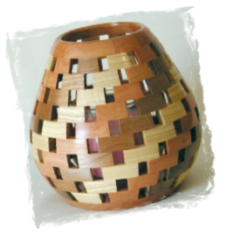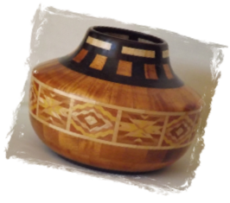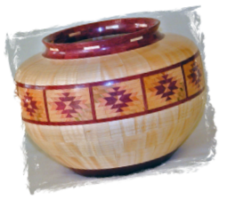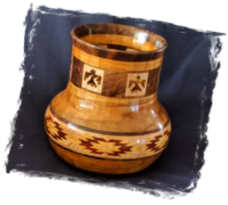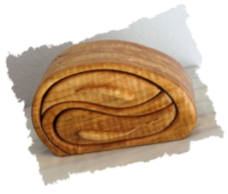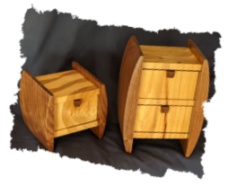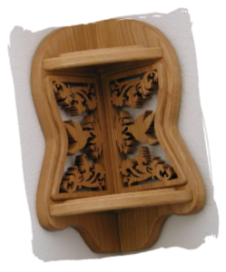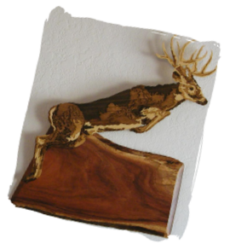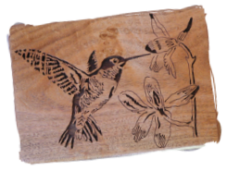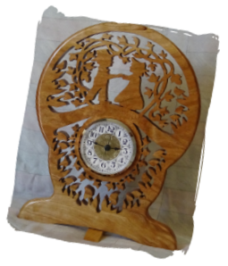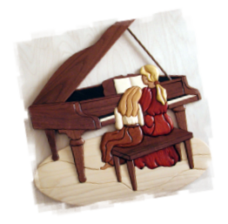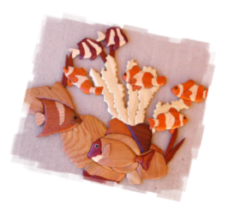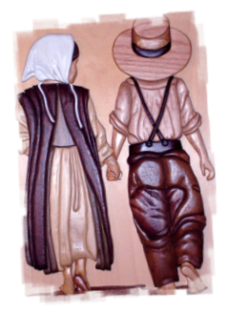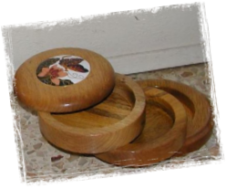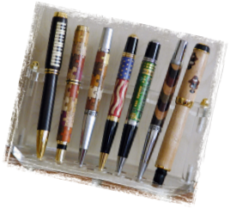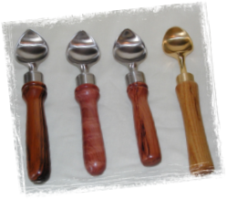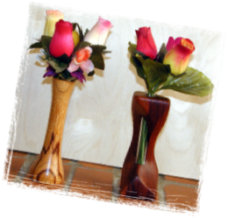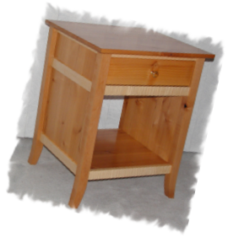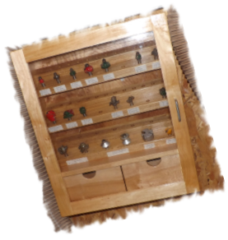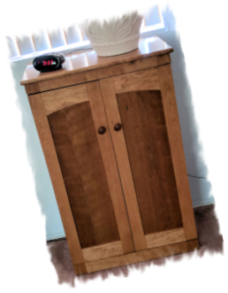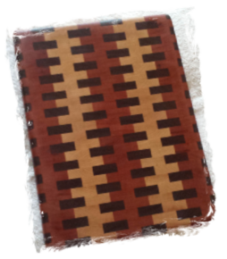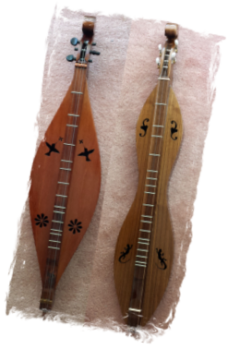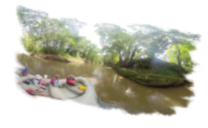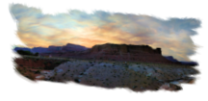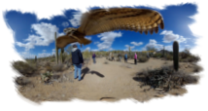Thunderbird
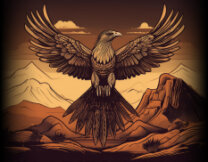
Woodworking
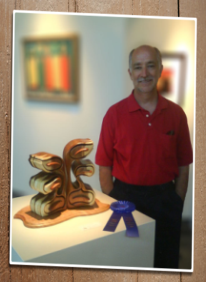
My name is Marvin Landis and this website does not sell anything, it is only my way of documenting how woodworking and a few other hobbies have provided so much enjoyment to me for 40 years. Woodworking always gave me a little relief from the computers that dominated my career, but the variety of wood colors, densities and grain patterns still matches nicely with my computer graphics background. Even in retirement, I still find computers invaluable in my woodworking, videography, and panoramic photography, and I'll provide links to some of those resources in my comments throughout these pages.
My brother and I were introduced to woodworking by our dad after he acquired a used 1957 Shopsmith, a tool that could transform into a table saw, circular sander, drill press or lathe. I always enjoyed assisting my dad when he was doing household projects using the Shopsmith and my primary use of it was woodturning projects on the lathe. The ultimate goal was to turn a set of chess pieces, however I never finished them. During college I was very fortunate to work part-time at "Lectrosonics" making wooden enclosures for portable sound systems. Even though my job was mass production of the least expensive plywood enclosures, I began to observe and learn from co-workers who crafted high-end walnut lecterns in the same shop. Years later after my wife and I moved into our first home, dad gave me the old Shopsmith which reignited my interest and was the true beginning of my passion for woodworking that continues to grow to this day. I now have a small woodshop full of machines and tools (see the panorama below), but there is still a place in my garage for the Shopsmith.
My dad was also partially responsible for the name "Thunderbird Woodworking" as he worked for Sandia National Laboratories and I always admired the thunderbird logo that appeared on all their correspondence. In many North American cultures the thunderbird is a powerful bird portrayed as a human protector that creates thunder by flapping its wings, and lightning by flashing its eyes. Thunderbirds are usually depicted as birds of prey, so I chose to use it to represent my favorite animals, the raptors that fly in our southwest skies.
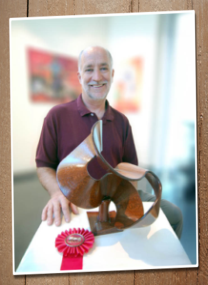
These gallery pages contain many of the woodworking projects and other hobbies that I've enjoyed over the last 4 decades. I hope some of the pleasure I have received from these hobbies is evident in the variety and number of images and videos you will find in these galleries. Just click on any one of the pictures or titles in the following sections, and you will be taken to the gallery page for that section. The menu that always appears at the top will also take you to the appropriate web page.
Segmented woodturning has recently become a favorite of mine. I particularly enjoy designing bowls and vases with southwestern patterns in the feature rings. Computer software such as the Segmented Project Planner and Woodturner Pro assist in creating both open and closed segmented vessel shapes and designs. Adding the Diamond Border Planner or Lamination Pro to their respective programs allows for designing of a huge variety of feature ring designs from laminated strips of different wood species. The "southwest blanket" designs you see in many of my feature rings were made possible by those programs.
This gallery includes both traditional and organic shaped boxes. The Incra LS Positioner fence on my router table allows me to create the dovetails and other decorative joinery techniques, such as the wooden hinges and corners seen on the rectangular shaped boxes. The beautiful organic box designs are by Lois Keener Ventura, who captured my attention in her two books, "Building Beautiful Boxes With Your Band Saw" and "Sculpted Band Saw Boxes". As you can guess from those book titles, the organic shaped boxes were created mainly with a band saw and a variety of handheld sanding devices.
Beth gifted me with a Sears Craftsman scroll saw not long after we moved to Arizona, so it was the second substantial piece of woodworking equipment in our garage and with it I could do things that weren't possible with the ShopSmith. Many of the early "Berry Basket" collapsible designs were cut out on that Sears scroll saw. I enjoyed the scroll saw projects so much I later upgraded to a very nice DeWalt scroll saw with a bigger support surface and easier to change blades. It is still in use in my shop, and has been invaluable for creating intricate designs in doll cradles and swings, musical instruments, several types of wall hangings, and many wedding and christmas gifts.
I became interested in intarsia because it utilizes a variety of wood species with their differences in color and grain patterns. The result also has dimensionality by using different depths of wood throughout the piece, and utilizing sanding and grinding wheels to shape and add details to each piece of the wooden "puzzle". Much of the designs in this gallery can be attributed to Judy Gale Roberts, who started creating "wood murals" with her father in his commercial artwork projects. Judy has co-authored several intarsia books with Jerry Booher, publishes the Intarsia Times, and teaches beginning and intermediate classes in the Great Smoky Mountains. The downside to intarsia is that I have a shed in back of my woodshop that is half filled with wood cutoffs from other projects, and I'm reluctant to get rid of them with the hopes l will eventually find a use for them in future intarsia projects.
Some of the early projects in this gallery were turned on the 1957 Shopsmith that was handed down to me by my dad, as the lathe was one of the very first things I used on that equipment when I was younger. Then in 1999 my Mom gave me a Jet mini-lathe, and that is the exact size for the projects I like to turn. I'm very leery of a lathe rotating a very large, dense piece of wood at high speeds, so all of my turnings are smaller pieces such as pens and pencils, flower vases, ice cream scoops, and bowls and vases less than 8 inches in diameter (which includes the segmented woodturned pieces seen in the gallery above).
For many years I focused primarily on creating small craft type items in my woodshop. The Shopsmith's tablesaw was not very large and did not have any safety features, so sawing large lumber pieces was not something I wanted to do often, and certainly not without an assistant. But in 2009 I purchased a SawStop Contractor tablesaw with plenty of surface area, a mobile base, and plenty of safety features. It's main safety feature is the ability to stop the sawblade from turning in less than 5 thousandths of a second if the blade touches a conductive material like skin or metal. So now I have the equipment needed to feel confident while ripping or crosscutting larger pieces of lumber and have started to create some furniture. I do consider it furniture even if it's intended for the home, patio or woodshop.
This final woodworking gallery contains projects that didn't fit into just one of the categories listed above. Some of the older images contained multiple categories such as scrollsaw, intarsia, and woodturning projects. Other items such as the three dimensional dolphins, the end grain cutting boards and the flat bottom canoe didn't use any of the techniques that would qualify them to fit into the previous categories. I used a scrollsaw to cut the sound holes in the dulcimers, but there was much more involved in creating those musical instruments than just cutting out a few holes in a couple pieces of wood. But this category just emphasizes the wide variety of woodworking that still challenges me to this day.
The image at the very top of this web page gives a flat panoramic view of the inside of my woodshop. The window below allows viewing an entire 360 degree image by interactively rotating the partial view left, right and even up and down. Both types of panoramas are fun hobbies I enjoy besides woodworking. If you enjoyed looking around in the woodshop panorama above, you might enjoy looking at the "My Other Hobbies" link below where you will find many more of my panoramic explorations.
Look around inside my woodshop... Click and drag the mouse around in the image above.
I enjoy other hobbies besides woodworking, including panoramic photography, videography, drones and virtual reality. This link takes you to a whole new starting location where you can find more information and examples of my experiments with these visual techniques.
